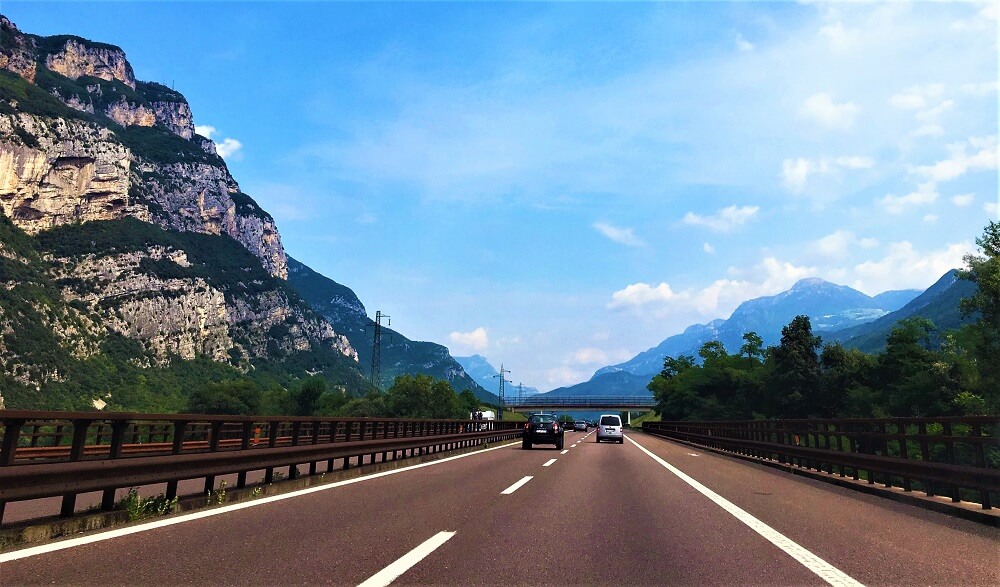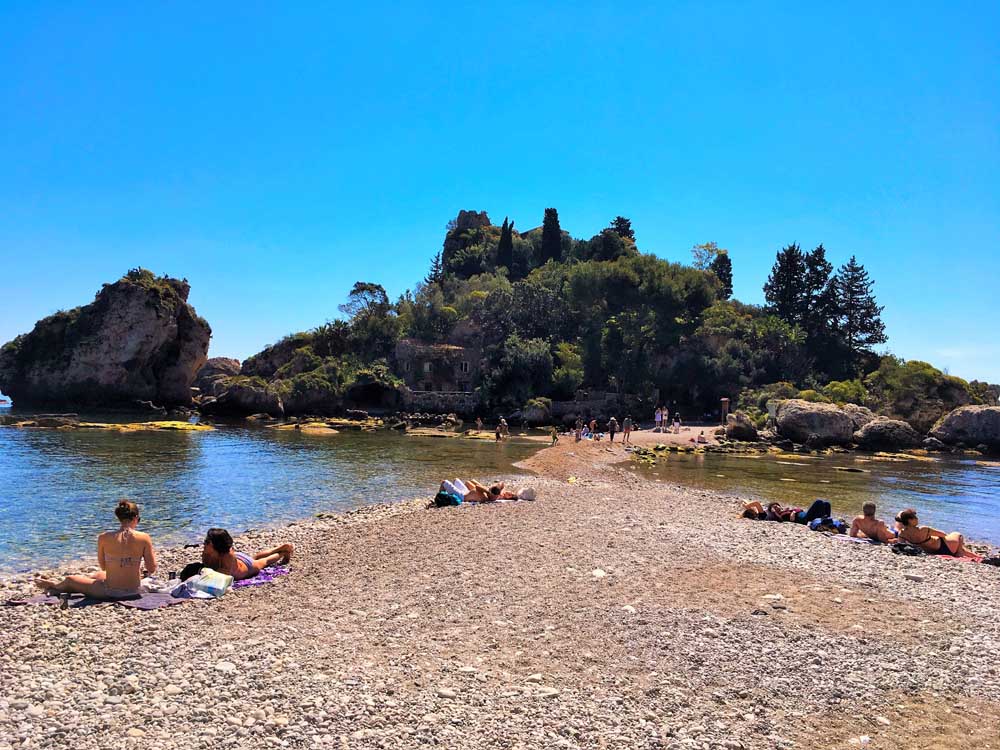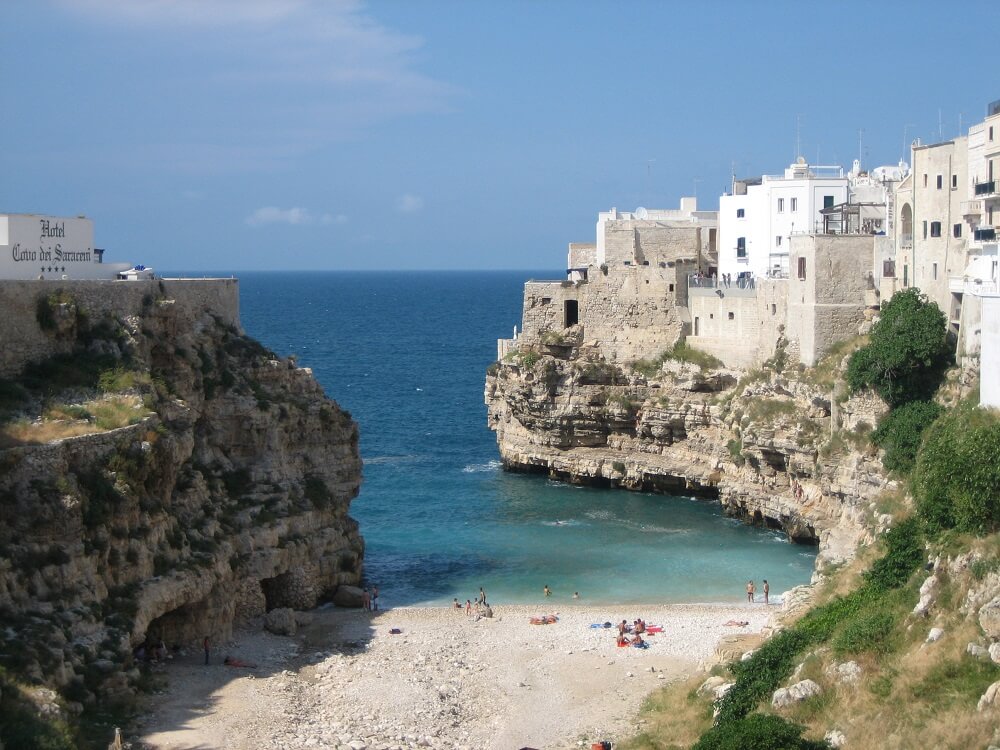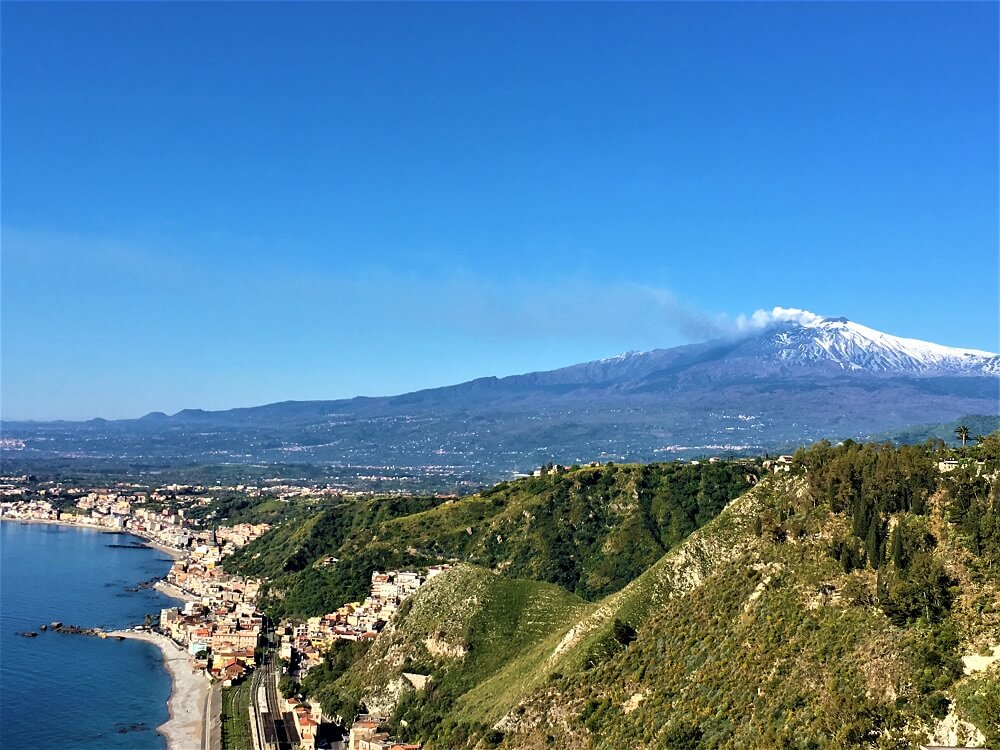Hidden gems of Italy: off the beaten track destinations
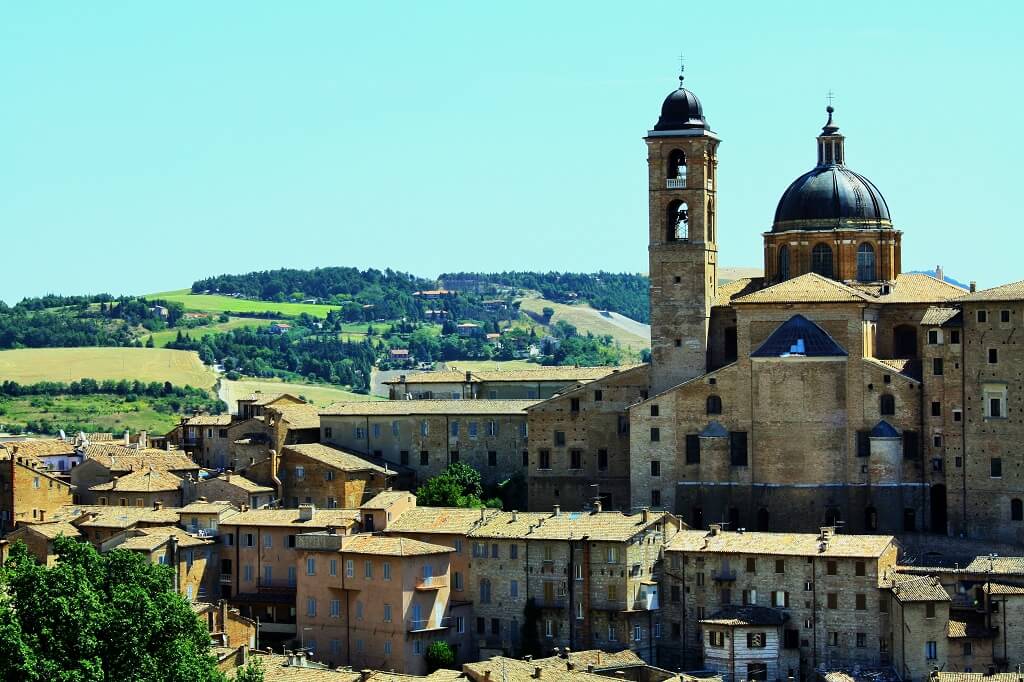
It’s easy to be drawn to the famous places in Italy and rightly so. Rome, Venice and Florence are justly renowned for their incredible art and history. However, if you’ve visited Italy once or twice already and you’re interested in seeking out destinations off the beaten track in Italy, take a look at some of my suggestions which follow. Likewise, if you’re visiting somewhere like Florence or the Amalfi Coast and you’d like to balance these tourist hotspots with some hidden gems of Italy, I hope this guide offers you some inspiration.

By the way, I’m aware that “hidden gem” is a rather subjective and over-used term nowadays and places truly off the beaten track in Italy, or elsewhere, are few and far between. Indeed, if an Italian surveyed my Italy hidden gems list they’d find it laughable as many of these places are incredibly popular with domestic tourists. However, for us Brits (and other nationalities who might be reading this), many of these destinations remain under the radar. It’s lucky my readership is fairly modest – I won’t be spoiling anyone’s secret Italy spots!
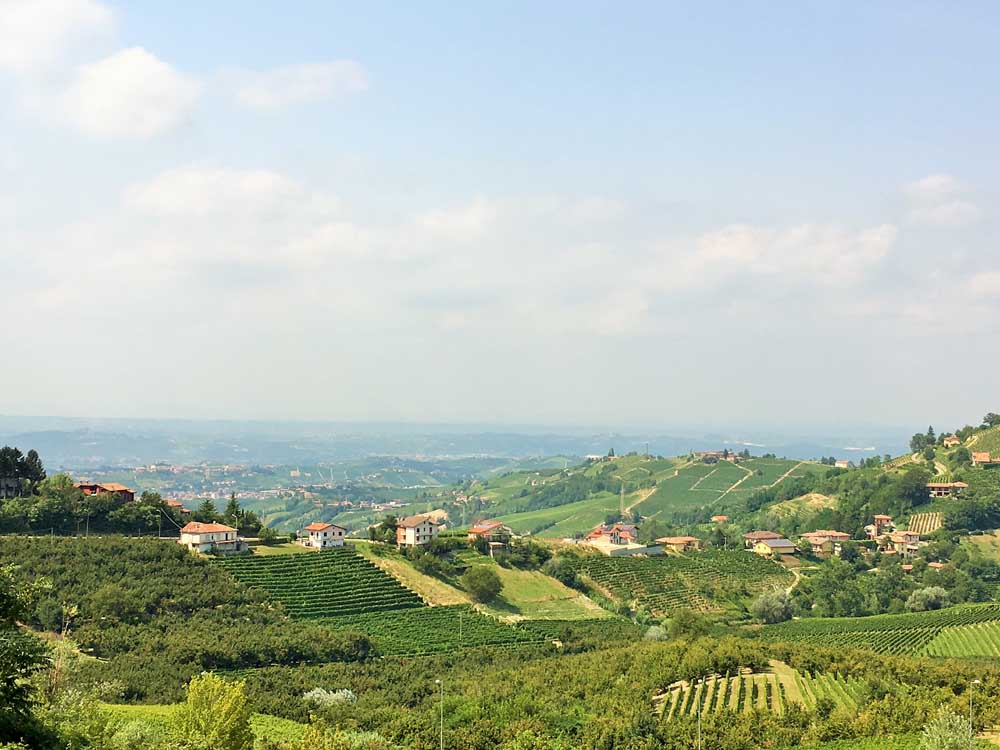
If you’re visiting Italy and you’re keen to avoid some of the crowds, try not to visit in August. I know that’s when most of us have our summer holiday but you’d be amazed how much of a difference it makes by visiting Italy at the end of July instead. Many of the Italian beach destinations I’ve detailed below will be packed – particularly for the first two weeks of August – with domestic tourists. If you’re travelling with children, take advantage – if you can – of those last 10 days of July when most of the UK schools have broken up. Not only will places be quieter, they might well be cheaper too.
If you’re visiting Italy without children or with pre-schoolers, May, June and September are optimum months to visit Italy. Late spring sees Italy at its most beautiful with wild flowers carpeting meadows while September is a great time to travel if you want the seas to be at their warmest.
This page contains affiliate links which means if you click and make a purchase, I will receive a small commission. This does not affect the price you pay.
Table of Contents
My favourite places in Italy off the beaten track
What follows are places in Italy off the beaten track which I’ve visited over the years along with some quiet spots in Italy which I used to send clients to during my years as a travel agent. I’ve lived and worked in Italy as well as taking countless holidays there, both with kids and without so I’ve got to know the country pretty well. Of course, there are many, many hidden gems in Italy. This little list of underrated places in Italy is just my take on this popular topic. In the current climate, everyone wants to stray off the beaten path a little more than they used to.
Some of these less well known Italian towns and small villages in Italy I’m recommending are great for a quick stop for lunch or dinner, indeed that’s all I did in some of them. Others lend themselves better to a longer stay.
Do you agree with my list of Italian hideaways? No doubt you have a few secret destinations in Italy too, let me know in the comments below if you don’t mind sharing them with my very select group of readers…
Hidden gems of Italy map
Italy hidden gems near Rome
Rome is an incredible city but if you’re keen to escape the crowds of the capital, there are some great day trips close by which remain off the beaten track in Italy. Rome in summertime can be incredibly hot so try one or both of these Italy hidden gems if you have time to spare.
Frascati
Following a lovely week at a villa in Le Marche, we ended an Italy summer holiday with a few days in Frascati. Our aim was to have somewhere rural as a base for a day trip into Rome. Whilst our one day in Rome with kids didn’t quite go according to plan, our stay in Frascati was heavenly.

Part of the group of 13 Castelli Romani hill towns near Rome, Frascati benefits from a cooler climate during the stifling summer months. Many Romans head out to Frascati for the weekend or simply for an evening meal. The town is famed not just for its sparkling wine but also for its delicious cuisine. Pop up restaurants appear as night falls: charcuterie is a speciality here with stalls of cured pork lining the streets. Informal tables and chairs are set up and visitors buy a flask of wine and some ham before joining the communal seating areas for dinner.

There’s a great playground on the edge of the town which we found really useful for keeping our kids occupied until the restaurants opened. There’s also some good pizza restaurants and gelaterias. Lots of families enjoy a stroll in the evening giving the town a really lively friendly feel. I would love to return to Frascati.
Lake Albano
We stumbled upon this incredible volcanic lake while we were staying in Frascati. It was a particularly hot summer and we had a free morning before heading to the airport so we decided to visit Lake Albano as it was near where we were staying.

The lake is a vivid turquoise green. It’s crystal clear and very deep in the centre, while the edges are sandy and a bit muddy. Our children loved playing on the beach and splashing into the water from a little slide with other children.

We took a pedalo out to the middle of the lake and jumped into the lovely cool clear water. Despite it being the very end of July, there was hardly a soul at the lake, just one or two families and an elderly gentleman reading his newspaper on a deckchair.
Hidden gems in northern Italy
I could write a whole article just on Piedmont – it’s one of my favourite parts of Italy. There are so many brilliant little towns and villages to explore – Alba, Barolo, Bra – the list is endless. The capital of the region – Turin – proved really popular when we visited with our children a couple of years ago. If you’re a fan of the 1969 Michael Caine movie the Italian Job, check out my guide to Turin which details some of the filming locations.

Montforte d’Alba, Piedmont
Anyway, we had a particularly enjoyable lunch in Monforte d’Alba and we loved exploring this little wine town so I thought I’d include it in my compilation of Italian gems. Like many medieval Italian villages, Monforte is positioned on a hilltop overlooking vineyards with the Alps visible on a clear day.

What set this little place apart from some of the other lovely villages in the region was the Auditorium Horszowski – a grassy open air amphitheatre built into the natural slope of the hillside. Named after the Russian pianist Mieczysław Horszowski who played at the inaugural concert in 1986.
Despite still being used for concerts, the little grassy theatre (when we visited quite some years ago admittedly) was in immaculate condition. Although I am sometimes disappointed by the care taken at some of Italy’s historic sites (particularly in Sicily), I am always wowed by how much love and attention is given to the preservation of tiny little Italian villages such as Monforte d’Alba. Skilled craftsmen continue to be employed to ensure these lovely secret spots in Italy live on for the next generation.
Roccaverano in Piedmont
About an hour east of Monforte d’Alba, Roccaverno is a particularly virtiginous hilltop town. There are spectacular far-reaching views over the woodlands and vineyards from the rather narrow tower of Castello di Roccaverano.

The door of the 13th century tower was a bit on the small side even for us Kirks – and we’re not big people!

The town is famed for its soft cheese – robiola – as well as its cured meats and hazelnuts. Come for the views and stay for lunch!
Where to stay in Piedmont
Piedmont feels like one of the best kept secrets in Italy. We took our kids there a few years ago and stayed at the brilliant Cascina Papa Mora near Alba. This family-run farm stay is the perfect base for exploring towns such as Monforte d’Alba.
Whatever you do, ensure you stay at an agriturismo with a restaurant during your visit to Piedmont. Read my article about farm stays to find out why I always rave about them.
Mantua in Lombardy
Although boasting a history which dates back to the Etruscans, it is Mantua’s Renaissance past which gained it UNESCO World Heritage status in 2008. It’s worth visiting Mantua for the entrance alone. We approached the city from the east, crossing the Ponte San Giorgio which straddles the broad lakes formed by the Mincio River. Driving across the bridge, you see Mantua rising before you with the vast 15th century Ducal Palace taking centre stage.

Visitors to Mantua can easily fill a day exploring the palace’s opulent rooms filled with impressive frescoes, the endless courtyards and the austere Castello di San Giorgio. However, away from the palace, it’s worth peeking into the Basilica di Sant’Andrea which has a stunning interior. If Renaissance masterpieces aren’t your thing, fear not – take a seat in one of the cafes which line expansive Piazza Sordello and sample some of the city’s cuisine – pasta stuffed with pumpkin is the primo piatto to try or if you need an afternoon pick me up, we enjoyed the endless array of cakes and biscuits.
Noli in Liguria
I’ve managed to visit this little seaside resort in Liguria twice. It might not cling to the cliffs in the same dramatic fashion as the Cinque Terre to the east but it has a particular charm which draws me back.

The sandy beach in Noli is really family friendly with play areas and excellent facilities. We ate pizza at a restaurant overlooking the beach as the sun set over the sea but on a previous visit we enjoyed eating in the old town which is packed with seafood restaurants spilling on to the narrow streets.
The Val d’Ega in the Dolomites
We visited the Dolomites during an incredible European road trip in 2019 (so glad we didn’t plan to do it a year later). We needed a stop off between central Italy and Innsbruck (where we had booked a motorail for our car). I found a brilliant family hotel hidden away in the Val d’Ega which we used as a base for hiking, biking and rock-climbing.

Unlike popular Val Badia and Val Gardena in the Dolomites, the Val d’Ega is one of the lesser known areas but still offers the same jagged backdrop of peaks for which the region is known. We loved cycling to Lake Carezza as well as hiking amid the incredible scenery – there are plenty of easy trails for children with sculptures and play areas to keep little people entertained.
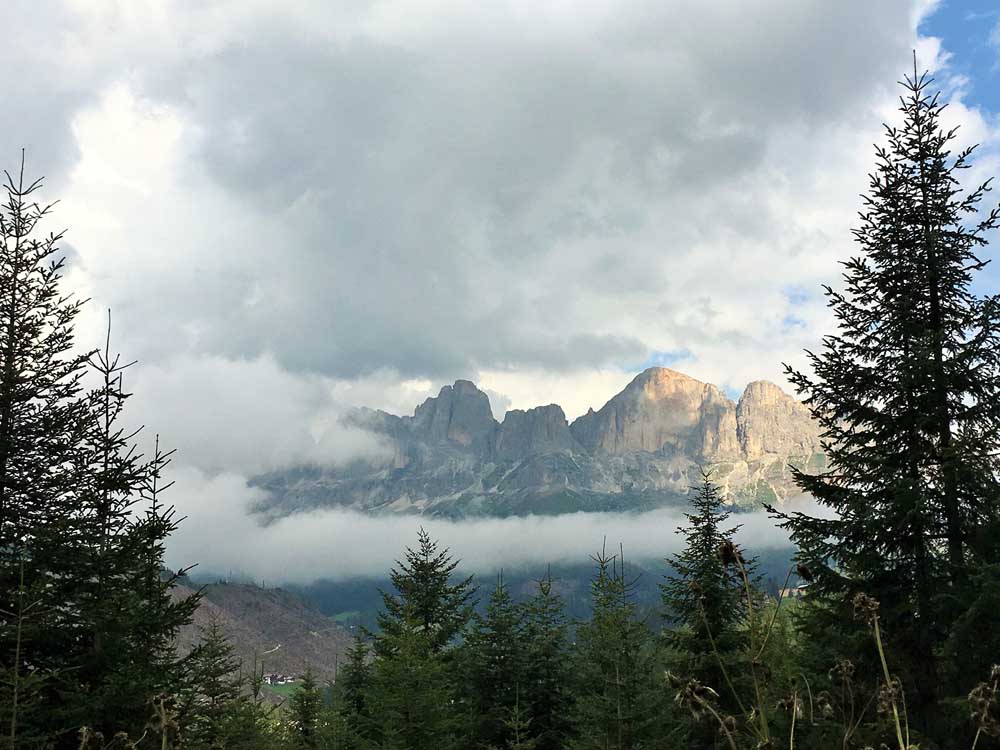
Where to stay in the Val d’Ega
If you’re visiting the Dolomites as a family, I recommend the Hotel Maria in Obereggen which has an indoor pool and a fun kids club. It organises lots of activities for families including rock climbing and via ferrata taster sessions which our children loved.
Umbria: off the beaten track in Italy’s green heart
For every famous hill top town in Umbria, there are countless little places which are overlooked and unaffected by the crowds of tourists close by. Here are some of my favourite spots in Umbria – they’re not completely unknown but they definitely attract fewer tourists than some of their neighbours.
Spello
Spello is hidden away not far from its more famous neighbour, the UNESCO World Heritage Site, Assisi. I loved the tranquillity of this little hill top town. The warm honey coloured streets are narrow and wind their way up to a lovely view point over the landscape below. Spello is a great place for a long lazy lunch or an afternoon coffee after a morning sightseeing.

In early summer Spello plays host to an infiorata when the lanes are carpeted with flowers. It is quite a sight to behold and a real task to lay out all of the delicate blooms.
Where to stay near Spello: if you really want to get away from it all, try the tranquillity of Le Silve. This hotel is positioned in the Monte Subasio hills, accessed via a long slow track, so once you’re there you’ll hear no road noise and you’ll see no other buildings. It’s heavenly.
Montefalco
I used to visit Umbria regularly for work. It was always rather hectic, visiting as many hotels, villas and agriturismo properties as time would allow. Evenings were a great time to relax and recover from the day. One particularly memorable evening was spent in Montefalco, known as the balcony of Umbria for its glorious views over the valley below.

I don’t remember what I ate in Montefalco but I remember what I drank: the town’s famous red wine made with the Sagrantino grape. And I remember the pride of the restaurant owner who insisted on giving us a bottle of wine to take home.
Gubbio
Umbria is brimming with hilltop towns – it’s tricky to decide which ones should warrant your attention. Although not as quaint as Spello or Montefalco, I really loved Gubbio. The town has elegant medieval streets to saunter through and incredible views across the valley below.

Such is the wealth of history in Italy, Gubbio’s Roman theatre – a 2,000 year old ruin which sits beneath the town – is little mentioned in guide books. The town is more well known for its impressive festivals – most notably the Festa dei Ceri which sees Gubbio’s streets bursting with locals and visitors who come to watch three giant wooden “candles” which are raced through the city which much flag waving and excitement.
Where to stay near Gubbio
There are some top-notch places to stay in Umbria – plenty of luxury hotels and inviting villas. However, if you’re travelling with children I would suggest staying at a farm such as the Agriturismo Sant’Illuminato near Citta di Castello.
The Sibillini Mountains
I’ve driven over this stunning mountain range – once for “work” and on another occasion as part of an Italy road trip. The Sibillini Mountains form a natural border between Umbria and Le Marche. The best time of year to visit is in late spring when the plains and meadows are carpeted with wild flowers.

The drive from Norcia (home to delicious porky products) along the ever-winding SP477 takes visitors to the lonely hilltop town of Castelluccio (badly damaged by the 2016 earthquake) and on through the mountains towards Ascoli Piceno. Start early and ensure you collect something delicious for your picnic lunch in Norcia.

Secret Tuscany
I visited lots of great places in Tuscany when I lived in Pisa as a student twenty something years ago. I’m afraid my memory has failed me on some of the more off the beaten path Tuscany destinations I used to frequent but here’s some of the highlights.
The Apuan Alps and the Garfagnana Valley
This beautiful mountainous region lies to the north of Lucca and Pistoia. Here you’ll find dense chestnut forests – and their associated culinary by-products; ski resorts (I used to take day trips to Abetone from Pisa); and authentic villages such as Barga and Borgo a Mozzano. The latter village is famous for its medieval devil’s bridge – the Ponte della Maddalena – which crosses the Serchio River.

The region is perfect for hiking and rock climbing. There are refugios which you can hike to – simple mountain hostels serving hearty food, set in the middle of nowhere with incredible views across the mountains. I have some very happy (if hazy) memories of hiking and rock climbing in the Apuan Alps.
The Island of Elba
Elba is the third largest Italian isle after Sicily and Sardinia but it is less well known among us Brits. It’s not a secret to the Italians however – come in August and the island is packed. It makes for a very lovely family seaside holiday – perfect for those looking to combine a week of sightseeing in mainland Tuscany with a more restful second week on the beach.
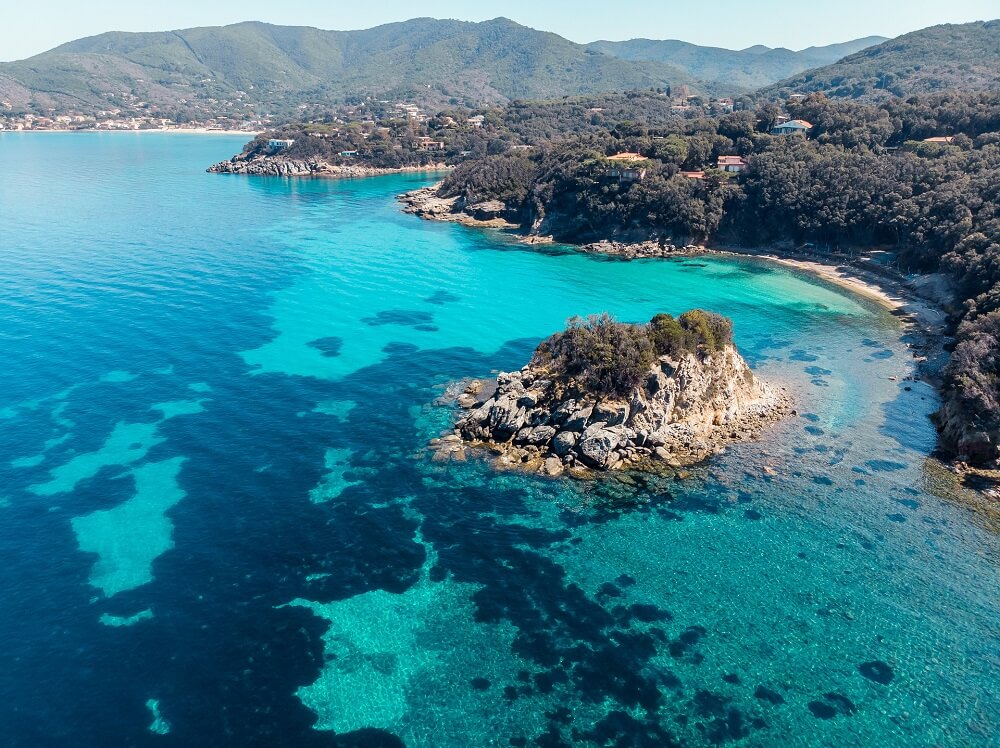
There’s also a smattering of culture on Elba in case you’ve not over done it on the mainland – Napoleon’s legacy on the island (he was exiled here in 1814) is interesting to explore. If you’re visiting during the shoulder months when the weather isn’t too hot, the 11th century Castello del Voterraio is a rewarding hike offering impressive views over the island and sea from its hilltop position.
There are regular car ferries over to Elba from the port of Piombino – a journey of an hour if you take a fast crossing. It’s also pretty straight forward to reach the island by public transport (I did this when I was a student) – there’s a direct train from Pisa to Piombino (taking around an hour and a half).
Where to stay on Elba
The Hotel del Golfo is a great destination on Elba for families. Located on the beach of Procchio on the north coast, this hotel offers family rooms and water sports and it’s within walking distance of restaurants and shops in the town.
The Maremma
Does every region claim to have the best beaches in Europe? Well, I remember visiting wonderfully unspoilt stretches of coast in the Maremma when I lived in Tuscany many years ago. Reached via pathways through pine forests, the long sandy beaches were impressive.

Although there is a protected regional park called Maremma, the unofficial Maremma area stretches much further than the park boundaries – Follonica in the north, and Orbetello in the south, with Monte Amiata creating a useful boundary inland. The interior is filled with cattle farms and wine estates along with various towns of note such as regional capital Grosseto, the vertiginous towns of Pitigliano and Sorano and the Renaissance town of Massa Marittima.

Back to the beaches, families will enjoy the forest-backed stretch of beach at Marina di Alberese while geography fans will marvel at the impressive seven kilometre arc of sand at La Feniglia which joins, with help from two other spits of sand, the peninsula of Monte Argentario to the mainland. Instagrammers and anyone else who likes to see and be seen will no doubt enjoy the chic resort of Porto Ercole. Incidentally, there are some good dive sites off the rocky coast of Monte Argentario – and snorkelling is popular too.
Hidden Italy: Le Marche
The whole of Le Marche feels like a bit of a secret. It offers many of the charms of neighbouring Tuscany and Umbria – medieval hilltop towns, good wine and great art – without the price tag or the crowds of tourists. Although much of the Marche coastline is unremarkable, it’s incredibly family-friendly and there are pockets of loveliness if you know where to find them…

Conero Regional Park
Just south of Ancona is a rather lovely protected area of coastline with forested slopes and white cliffs which rise from a particularly vivid blue sea. The Conero Regional Park – in contrast to the flat coast further south – is perfect for hiking but you’ll no doubt be drawn to the sea. Boats take visitors to remote coves near the towns of Numano and Sirolo. The latter is the most appealing town in the area – with a medieval centre and lovely views along the coast and towards Monte Conero.
Check Booking.com for accommodation on the Conero coast

Montedinove
Those working in town planning and urban regeneration could do a lot worse than visit this tiny hilltop settlement in Le Marche. Reached via a slow and narrow road of many hairpins, you’d expect a village such as this to be a crumbling and forgotten little spot. In fact, it appears to have had lots of money spent on restoring its narrow lanes with beautiful craftsmanship in clear evidence.

I recommend visiting Montedinove just before sunset. Not only will you enjoy the changing colours of the scenery below but you’ll also be able to enjoy some delicious apperitivi in one of the local bars.
Ascoli Piceno
If you prefer a sedentary approach to sightseeing, Ascoli is your kind of town. The best spot is the Renaissance Piazza del Popolo with its shiny travertine paving, elegant palazzos and beautiful Gothic Chiesa di San Francesco.

Even the piazza’s eateries have a story to tell – Caffe Meletti, once frequented by Hemingway and Satre, is the birthplace of the aniseed tipple Anisetta Meletti. Alternatively, try sampling the indulgent deep fried, stuffed olives – olive all’ascolana. I’m also rather fond of the white wine produced in this area of Italy – the Pecorino wine is delicious.
Away from Piazza del Popolo, the town has an excellent art gallery – the Pinacoteca Civica – which features some brilliant local artists as well as works by Titian and Rembrandt.
Where to stay in Ascoli Piceno
We enjoyed a lovely stay at the informal little Villa Cichi, just outside the town centre. There’s a secluded swimming pool in the gardens, perfect for working up an appetite prior to the delicious food you’ll consume later.
Fano
One of the things I love about Italy is the way ancient history sits side by side with modern life. Fano is an excellent example of this – famous for its Roman remains – including the huge Arco di Augusto – and its summer jazz festival.
Fano is one of the more attractive seaside towns on Italy’s Adriatic coast and its beaches are very popular with local families – you’ll find excellent facilities at the beach clubs for young and old alike.
Macerata
This central Italian hill town has a lovely feel to it. Since it’s a university town, it has a young and vibrant population and we really enjoyed having a wander through the shopping streets after lunch one day. If you’re a fan of classical music, it’s worth visiting the town for its excellent opera festival which takes place in a 19th century open air arena.
Urbino
Urbino shouldn’t really be on this list as it’s the childhood home of an incredibly famous Renaissance artist – Raphael (whose birthplace you can visit) – and it has a renowned art gallery, the National Gallery of Le Marche. However, I spent a couple of nights in Urbino one summer and I was surprised to find there were virtually no tourists there.

During our visit, the streets were full of life in the evenings and the town had a great atmosphere. Despite its small size, Urbino is a university town so there were plenty of young people spilling out of bars and cafes in the central Piazza della Republica.
Grottammare
During a summer holiday in Le Marche, we paid several visits to the seaside town of Grottammare. Pre-kids, I was never a fan of Italian beach resorts: rows of regimented sunbeds and umbrellas. I much preferred unspoilt wild beaches in remote spots. However, I am now a convert. And Grottammare is a perfect example of why the Italians know what they’re doing. When it’s 40 degrees and you have energetic small children, it’s very agreeable to have an espresso delivered to your shady sunbed.
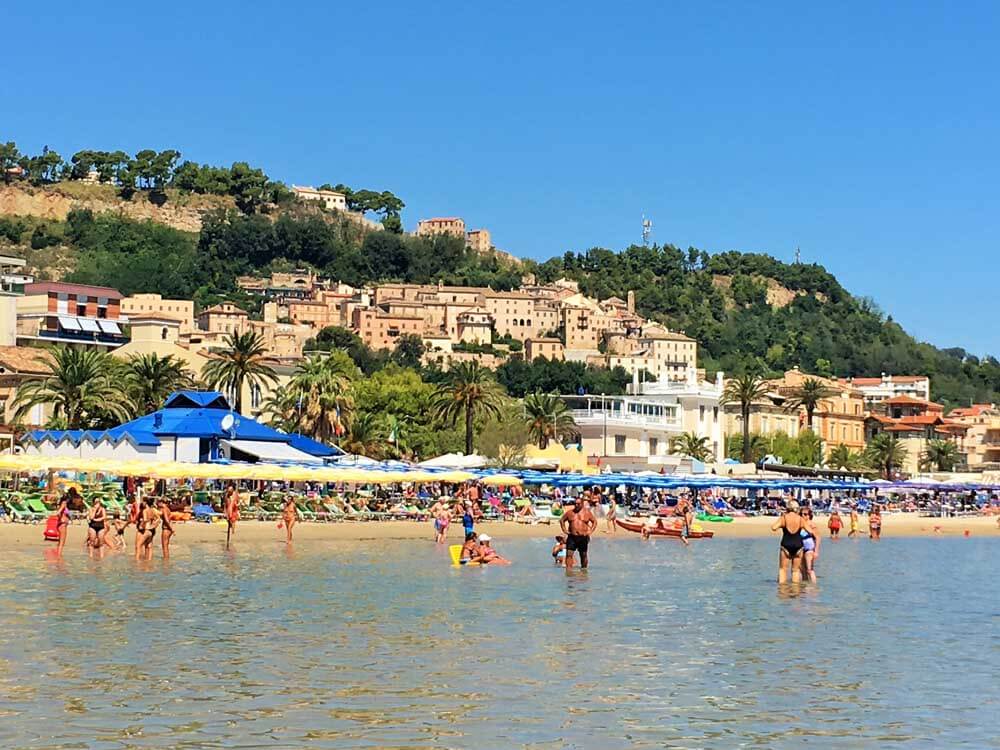
At Grottammare, the sea too is very much to my liking when I’m holidaying with little kids. It remains shallow for ages so children can splash around without accidentally plummeting into a deep section of water. Behind the modern beachfront of bars, cafes and shops is a car-free promenade and above that is a picturesque looking old town which I’m ashamed to admit we didn’t get round to visiting, despite it being a member of the Borghi piu Belli d’Italia – the most beautiful towns of Italy.
Southern Italy hidden gems
The Cilento Coast
If you’re visiting the Amalfi Coast along with Pompeii and Herculaneum, but you fancy somewhere in Italy off the beaten path to escape to afterwards, the Cilento coast in southern Campania is perfect.
Amalfi, as magical as it is, does not have great beaches. Cilento does – lots of sandy ones hidden amid a rugged coastline. There are appealing seaside towns too and the interior offers stunning mountains. Cilento also has ancient ruins to explore – the Greek temples at Paestum. All of this incredible loveliness is part of the UNESCO-recognised Cilento and Vallo di Diano National Park.

There are several towns to consider for a seaside holiday on the Cilento Coast. Agropoli is probably the most popular town, located in the north of the region. It sits on a clifftop overlooking the sea and has an appealing old town. Further south is Castellabate, a trio of destinations which share the Castellabate name. There’s a tiny medieval hilltop town which affords excellent views over the seaside towns of Santa Maria and San Marco where you’ll find sandy beaches, harbours and seafood restaurants.
Another resort to consider, in the south of Cilento, is Palinuro – well known for its impressive sea caves.
Italian families flock to the Cilento for summer beach holidays – this is one of the most appealing hidden gems of Italy for a seaside break.
Look on Booking.com for somewhere to stay on the Cilento coast.
Maratea and the Tyrrhenian coastline of Basilicata
Not to be confused with the remote hilltop cave town of Matera (also in Basilicata), the little town of Maratea is a perfect base for exploring the small coastal stretch of this underrated region of Italy. Set back from the sea on a hilltop Maratea has wonderful views of the inland mountains.

Maratea doesn’t have any must see sights – except perhaps the giant statue of Christ which looms over the town. Instead, the town is one of those perfect places to enjoy long lunches and regular cafe stops – Piazza Buraglia is a particularly scenic spot. Maratea is a great base for exploring Basilicata’s tiny rocky coves and caves – the water is crystal clear. Acquafredda and Fiumicello are both close by and warrant a visit for lunch and a swim.

Where to stay in Maratea
If, unlike me, you’re not travelling with kids, check out La Locanda delle Donne Monache – a rather stylish little hotel on the edge of town with a rooftop pool. Rooms tend to be on the snug side but there is one suite which sleeps a family – provided your kids aren’t the sort that dive bomb the pool, it’s not an obvious choice for little kids.
If you’re travelling with a pre-schooler, you might like Hotel Villa delle Meraviglie which has triple rooms with a spacious terrace so you can sit outside enjoying a glass of wine while your little one slumbers. The hotel has a children’s pool and a play area and it’s just one kilometre from the sea at Fiumicello.
Procida island in the Bay of Naples
While most visitors head for the gorgeous isles of Capri and Ischia, the little island of Procida – 45 minutes ferry ride from Naples – is a far less-visited destination.
I took a day trip to Procida when I was a student living in Italy. My friend and I were staying in Naples and we met a girl on a bus who invited us to have lunch with her on Procida – it was the summer holidays and she was at a loose end. She took us on a little tour of the island – finding hidden swimming spots where we could leap off the rocks into crystal clear waters. We ate a delicious meal in colourful Corricella before taking the ferry back to Naples – it was a memorable little day trip.

Procida lacks the glitz of Capri and the beaches of Ischia – some might find it boring and a bit run down – but the cubes of colourful houses, the peaceful coastline and the warm welcome which we experienced make it a destination to head to if you need a break from the grit of Naples.
Tropea
Italy does a pretty good line in beach towns but one of my all time favourites is Tropea. Its Piazza Ercole is the perfect place for a morning coffee or an evening passeggiata while the beach below the town is a great place for sandcastle building.

Tropea is famous for its delicious red onions, and having sampled them I can indeed confirm that they are the most sweet and tasty onions I’ve ever had the pleasure of eating.
Where to stay near Tropea
If you’re visiting Calabria with kids, there are a couple of lovely places to stay at not far from Tropea. For a taste of true Calabrian rural life, try a few nights up in the hills at Le Carolee eating delicious food and enjoying the tranquillity of the pool and then head down to the coast at Capo Vaticano and stay at La Conchiglia. This family-run property features small villas and hotel rooms which share a swimming pool, there’s a restaurant on site and it’s a 10 minute walk to a sandy beach.
Gallipoli
Perhaps Gallipoli is not quite the Italy hidden gem it once was, it’s about ten years since I last visited. However, if you’re after a scenic spot in which to sample some delicious seafood, Gallipoli in Puglia takes some beating. This is a delightful coastal town to have lunch in.
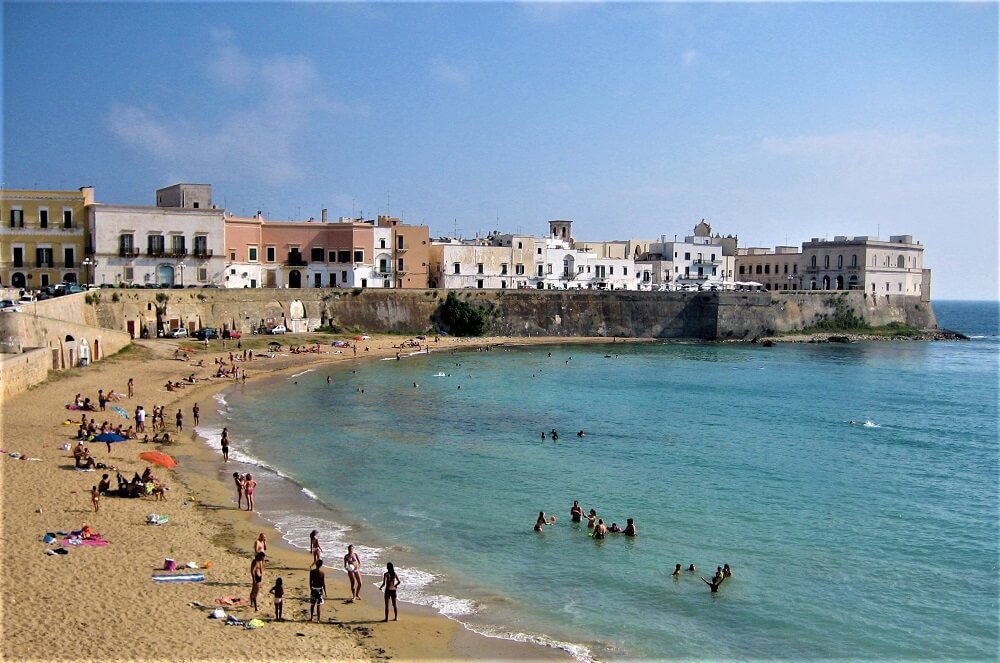
Gallipoli pokes out of the western side of the Salento peninsula, its historic centre, surrounded by defensive walls, is connected to the mainland by a 17th century bridge. Either side of the town are long stretches of sandy beach so you can combine a great lunch with an afternoon at the seaside.
Read about family friendly places to stay in Puglia
Hidden gems in Sicily
I am a big fan of Sicily. The island itself is one big underrated region of Italy. And yet it has so much to warrant several visits. I love the food and the wine, the incredible history and the wonderful sandy beaches. It has some fascinating towns to explore – my favourite in Syracuse – and some really beautiful landscapes. Visit in spring to get the best from your trip to this enigmatic isle.
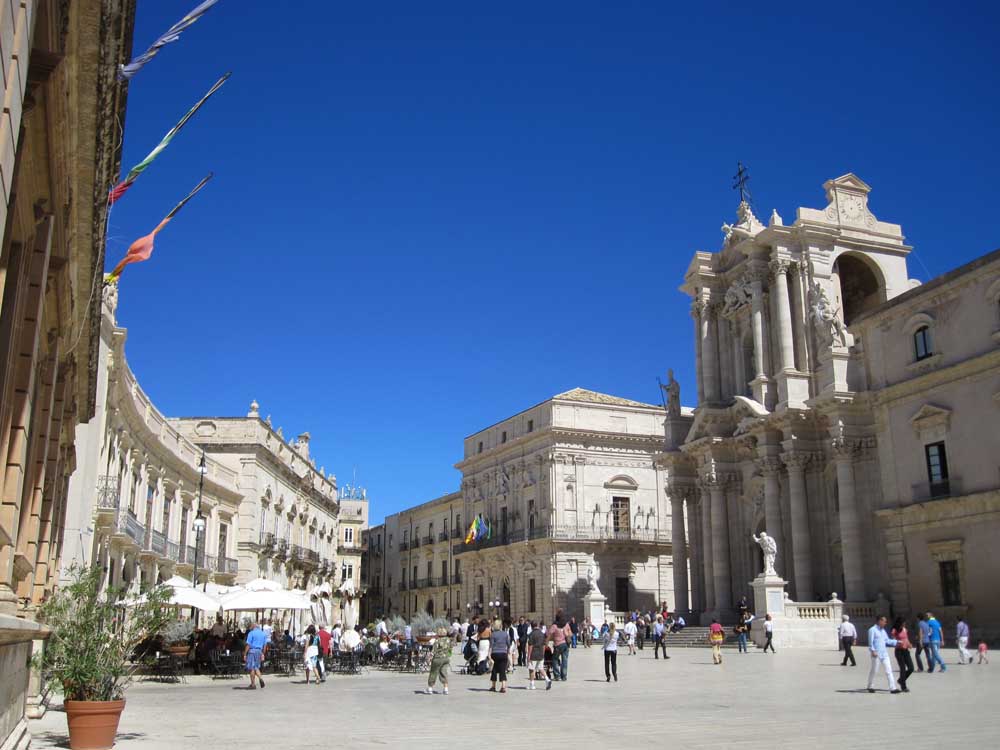
Check out my guide to Sicily with kids (perfect for grown ups too!) for an overview of some of the best things to see and do on the island including plenty more Sicily hidden spots I haven’t listed here.
Enna
I spent many years reading about Enna before I finally got the chance to visit this hidden gem in central Sicily. We visited Enna at Eastertime in order to witness the centuries old traditions which see locals dressed in gowns parading the streets.

The highlight for us however was climbing the Torre Pisana of Castello di Lombardia and taking in views stretching over the wheat fields surrounding the city. Much of Italy’s pasta is produced from these fields, it’s an incredible sight in spring when the fields are a glorious shade of green and stretch for as far as the eye can see.
Where to stay near Enna
The lack of hotels in Enna shouldn’t put you off paying the town a visit – stay out of the centre like we did at a farm. We used Baglio Pollicarini as a base for visits to Enna and other towns nearby. It has a pool and a restaurant and on a clear day there are distant views of Mount Etna.
Caltagirone
It’s easy to neglect Sicily’s interior given the riches so close to the island’s coastline. However, for visitors who make the effort to venture inland, the rewards are great.

We stopped for lunch in Caltagirone on route to Enna. I’d read about the town’s ceramic staircase and loved the sound of it. There are 142 steps each inlaid with colourful hand painted tiles. Along the route to the top are ceramic shops and cafes to pause in. Another incredible feat of Italian craftsmanship.
Piazza Armerina and Villa Casale del Romana
Sicily has such a wealth of archaeological sites, it sometimes feels overwhelming deciding which places to visit. Taormina’s amphitheatre is always top of the list and the golden mosaics at Monreale near Palermo are also justly popular. However, in the centre of the island, just outside the small town of Piazza Armerina is the incredible Villa Casale del Romana featuring a remarkably well preserved collection of mosaics depicting a wide variety of scenes including sport, mythical stories and battles.

The mosaics at Casale del Romana were once the floor of a wealthy Roman home. They are particularly colourful and skilfully produced – believed to have been made by craftsman from North Africa.
Modica
More well known than my other suggestions in Sicily, Modica nevertheless gets less publicity than neighbouring Ragusa. I visited Modica on a dark and stormy night and it felt like one of the most atmospheric destinations I’d ever come across.

The main road through the town, Corso Umberto I, is positioned in a deep valley with crumbling buildings climbing the steep hillsides on either side. The twin cathedrals of San Pietro and San Girgio with with their dramatic steps looked incredibly eerie lit up in the darkness.
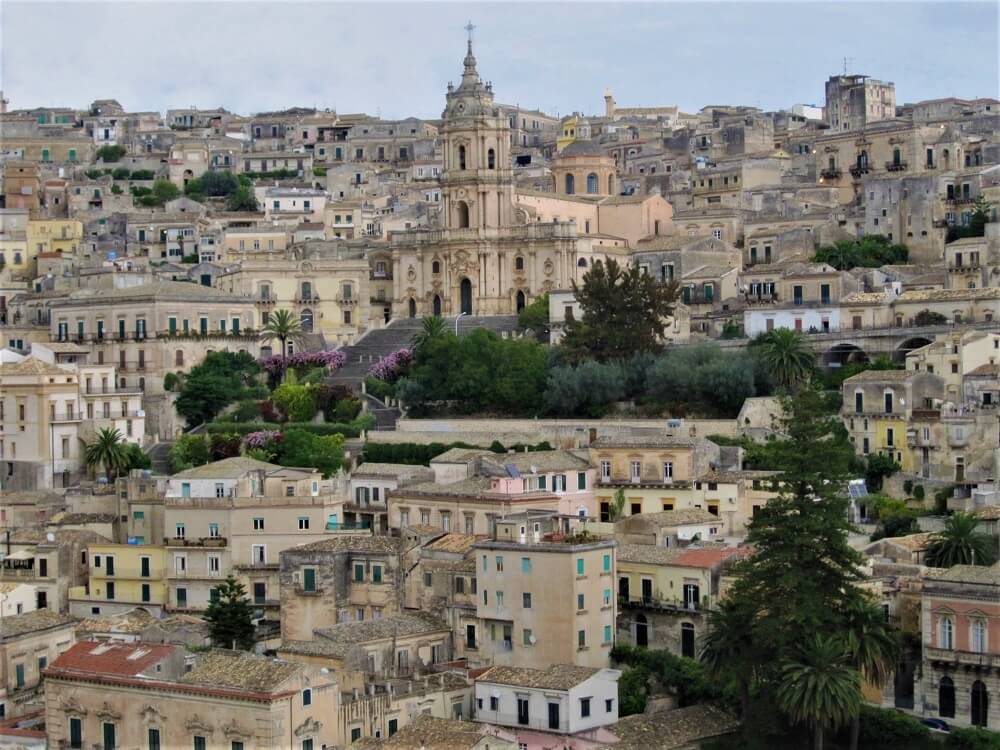
I returned to Modica on a sunny day some years later and it felt quite different, I was a little disappointed but I still enjoyed strolling the streets and popping into the traditional chocolate shop Antica Dolceria Bonjuto for some of its crunchy confectionary.
Find out more about the best things to do in Sicily here – including plenty more Italy off the beaten track ideas.
Useful resources for visiting Italy
Foreign Office Advice for Italy
It’s always worth checking the Foreign Office website for the latest travel news – everything changes so quickly in our new Covid world.
The most beautiful towns in Italy
If you want to put together your own list of hidden gems Italy, check out the website i borghi più belli d’Italia which is an official list of the most beautiful towns in Italy.
Avoid Crowds
Let’s face it, with international tourist numbers shooting up at a meteoric rate, nowhere in Italy is going to be truly free of visitors. However, if you want to visit somewhere like Venice, check ahead on Avoid Crowds to see if you can avoid visiting during a major event or when a cruise ship is due to arrive.
******
Do you have any hidden gems in Italy which you’d be willing to share with my select group of readers? Let me know in the comments below…
Read more articles about Italy
If you’d like to read more about holidays to Italy, here are some of the most popular posts on the site:
Driving from the UK to Italy: route ideas
Family road trip from Tuscany to Le Marche
Where to stay in Puglia with kids
